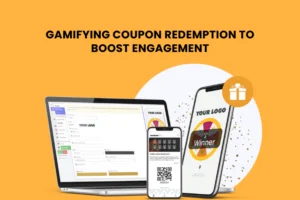
5 Best Practices for Implementing Loyalty Programs in the Retail Industry
Implementing an effective loyalty program is a strategic necessity for retail businesses looking to enhance customer retention, increase lifetime value, and create a sustainable competitive advantage. Whether your focus is on ecommerce or brick-and-mortar stores, a well-crafted loyalty program can significantly boost customer loyalty and business outcomes. Here are five best practices for implementing successful loyalty programs in the retail industry, incorporating both traditional retail and ecommerce approaches.
-
Integrate Seamlessly Across All Platforms:
For any retail loyalty program to succeed, it must offer a seamless experience across all customer touchpoints. This means integrating your loyalty program with both your physical retail operations and your ecommerce loyalty platform. Customers should be able to earn and redeem points both in-store and online without any friction. For instance, a customer purchasing from your ecommerce site should be able to use the points they earned from an earlier purchase at a physical store, and vice versa. This cross-platform functionality not only enhances user convenience but also encourages repeated use and greater engagement with the program.
-
Personalize the Customer Experience:
Personalization is key to making your loyalty program stand out. Utilize data analytics to understand customer behaviors, preferences, and purchasing patterns. This information can be leveraged to tailor your rewards and offers to meet the specific needs and desires of individual customers. For example, if data shows that a customer frequently purchases children’s clothing from your retail store, your loyalty program could offer them special discounts on kids’ apparel during back-to-school seasons. On ecommerce platforms, personalized product recommendations can be provided based on past purchases. This level of personalization not only improves the customer experience but also increases the effectiveness of your marketing efforts.
-
Offer Diverse and Valuable Rewards:
The attractiveness of your loyalty program hinges largely on the rewards you offer. It’s crucial to provide a range of rewards that are both attainable and desirable to your customer base. This could include discounts, exclusive access to sales, free products, or special services like free shipping for ecommerce customers. The key is to keep the rewards appealing yet sustainable for the business. Additionally, consider incorporating tiered rewards systems where customers can unlock new benefits as they reach higher levels of spending. This not only motivates continued engagement but also fosters a deeper sense of loyalty and connection to the brand.
-
Promote Active Engagement and Regular Updates:
To keep your loyalty program active and engaging, regularly update your offerings and communicate these changes effectively to your customers. Use email marketing, social media, and in-store displays to keep your customers informed about the latest updates and benefits of your loyalty program. Encourage participation through interactive elements such as contests, gamification, or social sharing bonuses. For instance, customers could earn extra points for sharing their purchases on social media or writing product reviews, which in turn can enhance customer engagement and provide free word-of-mouth promotion.
-
Analyze, Adapt, and Improve:
The retail landscape is continuously evolving, and so should your loyalty program. Regularly analyze the performance of your loyalty program to understand what’s working and what isn’t. This involves tracking participation rates, redemption rates, customer feedback, and overall sales impact. Use this data to make informed adjustments to your program, whether it’s tweaking the rewards, changing the point system, or introducing new features. Continuous improvement will help you maintain an attractive and effective loyalty program that keeps pace with customer expectations and market trends.
By following these best practices, retailers can develop robust loyalty programs that enhance customer satisfaction, promote sustained engagement, and drive business growth. Whether through a digital loyalty program for small businesses or a comprehensive retail loyalty platform, the key to success lies in creating a seamless, personalized, and rewarding experience that resonates with your customers.





